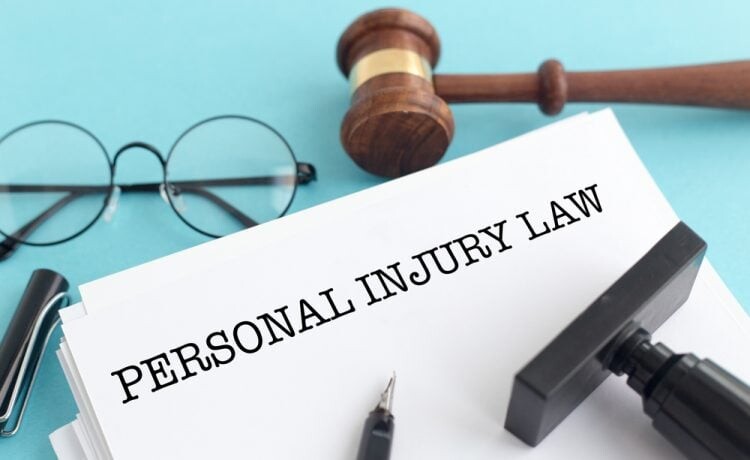
Navigating the aftermath of a personal injury can feel overwhelming, especially when medical bills and lost wages start piling up. In New York, understanding your legal options is crucial for securing the compensation you deserve. Filing a personal injury lawsuit might seem complex, but with the right guidance, it becomes a manageable process.
From determining fault to meeting strict deadlines, New York’s legal system has specific requirements for personal injury cases. Knowing these steps can make all the difference in achieving a favorable outcome. This guide breaks down the process to help individuals take informed actions and protect their rights.
Gathering Evidence to Support Your Personal Injury Claim
Strong evidence strengthens a personal injury claim and improves the chances of favorable compensation. In New York, it plays a pivotal role in proving fault and substantiating damages.
- Photographs and Videos: Visual evidence from the scene provides critical details, such as road conditions, property damage, and visible injuries. These materials serve as primary proof to support the claim.
- Medical Records: Documentation of medical treatment connects the injuries directly to the incident. Records like diagnostic reports and physician notes establish the severity of injuries and the necessity of treatment.
- Witness Statements: Statements collected from individuals who saw the incident add credibility to the account of events. Accurate witness information supports claims by verifying fault.
- Police Reports: Official reports created at the scene offer unbiased, detailed accounts of the incident. These reports may include citations issued, identifying liable parties.
- Financial Documentation: Proof of lost wages, medical bills, and additional expenses quantifies damages. These documents ensure the proper evaluation of economic losses due to the injury.
Organized evidence makes legal actions, such as filing through professionals like The Ahearne Law Firm, PLLC, more precise. Always secure proof as soon as possible to preserve its authenticity and relevance.
Preparing Legal Documentation for Filing a Lawsuit
Accurate and complete legal documentation establishes the foundation for a personal injury lawsuit in New York. Precise preparation ensures compliance with state-specific requirements and strengthens the claim.
Complaint Document
The plaintiff prepares a complaint that outlines allegations against the defendant. It includes details such as the incident date, location, and injuries. If permissible under New York law, injuries or damages described must align with provided evidence.
Summons
A summons informs the defendant of the lawsuit and mandates their response. Plaintiffs file the summons, along with the complaint, in the civil court having jurisdiction over the case.
Evidence Review
Legal documentation incorporates evidence supporting the claim. For example, medical bills, accident reports, and photographs substantiate alleged damages and provide clarity in court proceedings.
Proof of Service
After filing, the plaintiff delivers the summons and complaint to the defendant. The court requires proof of this service, often provided through an affidavit by the process server.
Filing Timeline
New York mandates strict deadlines for filing personal injury lawsuits. Documentation must comply with the statute of limitations, which is generally three years from the injury date.
Comprehensive documentation aids plaintiffs in meeting critical filing requirements, streamlining case progression.
Understanding the Statute of Limitations in New York
New York enforces strict time limits for filing personal injury lawsuits, known as the statute of limitations. These deadlines are critical, as cases filed outside this time frame are typically dismissed, eliminating the chance for compensation. For most personal injury cases, plaintiffs have three years from the date of the injury to initiate legal action.
This three-year deadline applies to injuries resulting from incidents like car accidents, slip and falls, and workplace hazards. Certain exceptions, however, adjust the timeline. For instance, if the injury involves a municipality or government entity, the claimant must file a notice of claim within 90 days and commence a lawsuit within a year and 90 days. Also, if the injured party is a minor or mentally incapacitated, the statute may pause until they reach legal capacity.
Failing to comply with these deadlines, regardless of circumstances, can jeopardize the claim. Legal counsel, such as firms like The Ahearne Law Firm PLLC, can evaluate specific cases and clarify proper timing while addressing New York’s procedural complexities.
How to File Your Lawsuit in Court
Filing a personal injury lawsuit in New York requires adherence to detailed procedures to ensure the case progresses correctly. Plaintiffs must submit necessary documents, follow court rules, and meet legal deadlines.
- File the Complaint and Summons
Plaintiffs must prepare the complaint, which outlines legal claims against the defendant, and the summons, which informs the defendant of the lawsuit. These documents should comply with New York Civil Practice Law and Rules (CPLR). Once prepared, plaintiffs must file them with the appropriate court, based on the case’s value or complexity. - Pay Filing Fee
New York courts charge a filing fee, commonly $210 for Supreme Court cases. Payment is required to officially register the lawsuit. Fee waivers may apply to individuals with financial hardships. - Serve the Defendant
Plaintiffs must serve the summons and complaint on the defendant, using an authorized process server, within 120 days of filing. Proof of service must then be submitted to the court as confirmation. Missing this deadline could result in case dismissal. - Await Defendant’s Response
After service, defendants typically have 20 to 30 days to respond, depending on service method. Responses include answers admitting or denying claims or motions to dismiss based on procedural grounds. - File Other Necessary Motions and Documents
Cases requiring preliminary motions (e.g., motions to strike or amend) or additional statements may need specific filings. Ensuring full compliance with court procedures is critical for avoiding unnecessary delays.
Accurate document preparation and process adherence are vital for effective case filing. Legal professionals, such as The Ahearne Law Firm PLLC, help navigate these steps efficiently when plaintiffs face legal or procedural uncertainty.
Steps Involved in Negotiating Settlements Before Trial
Settlement negotiations often occur before a personal injury lawsuit reaches trial. This process allows parties to resolve disputes without prolonged court proceedings.
- Case Evaluation
Attorneys assess the case’s strengths, weaknesses, and potential value. They review evidence, medical records, and accident reports to determine reasonable compensation demands. - Demand Letter
Plaintiffs send a demand letter to the defendant or their insurer. This document outlines the injuries, evidence, and requested settlement amount. It sets the stage for negotiation discussions. - Insurance Adjuster Review
Insurance companies review the demand letter and submitted evidence. They may issue a counteroffer if the initial settlement amount is considered too high. - Negotiation Process
Both parties engage in discussions to reach a mutually acceptable settlement. This phase may involve multiple counteroffers, adjustments, and justifications based on evidence or liability. - Mediation (If Necessary)
If direct negotiations stall, mediation can assist. A neutral third party facilitates discussions, aiming to reach an agreement. Mediation is often a cost-effective alternative to proceeding to trial. - Settlement Agreement
Once an agreement is reached, both parties sign a settlement document. This legally binding agreement outlines the compensation terms. After signing, the plaintiff waives the right to pursue further legal action.
Settlement negotiations streamline resolutions, ensuring faster compensation for accident victims. If negotiations fail, plaintiffs may proceed with trial proceedings under New York legal guidelines for personal injury cases.
Navigating the Litigation Process with Legal Support
Engaging legal support ensures proper navigation of the litigation process in a personal injury lawsuit. Experienced attorneys guide plaintiffs through complex procedures, ensuring compliance with New York’s legal framework and maximizing the chances of a favorable outcome.
Case Assessment
Legal professionals evaluate the merits of a claim by reviewing evidence, applicable laws, and the defendant’s liability. This step identifies the strengths and weaknesses of a case, helping plaintiffs understand potential outcomes.
Discovery Process
Attorneys manage document exchange and depositions during the discovery phase. This includes gathering further evidence, such as medical records or expert testimonies, and responding to defendant requests for information. The process ensures both parties access critical details for trial preparation.
Pre-Trial Motions
Counsel handles pre-trial tasks, including submitting motions to dismiss weak evidence or requesting judgment based on uncontroverted facts. These motions help refine the case before trial, focusing on actionable claims.
Trial Representation
Legal representatives present evidence, question witnesses, and articulate arguments during trial proceedings. They protect plaintiff interests and leverage expertise in New York civil procedure laws to counter opposing arguments effectively.
Law firms, such as The Ahearne Law Firm PLLC, provide specialized services for litigants, simplifying How to File a Personal Injury Lawsuit in New York. They ensure each procedural step complies with state mandates, safeguarding client rights.
What to Expect During Court Proceedings
Filing a personal injury lawsuit in New York can be a complex journey, but understanding the process and seeking professional legal guidance can make all the difference. Once a case moves to court, plaintiffs can expect detailed procedures, including discovery, pre-trial motions, and potentially a trial. Each stage requires careful preparation and adherence to New York’s legal standards.
With the right evidence, documentation, and legal representation, individuals can navigate these proceedings confidently. An experienced attorney ensures compliance with court rules, advocates for fair compensation, and provides the support needed to face any challenges. For those pursuing justice after a personal injury, staying informed and proactive is key to achieving a successful resolution.
